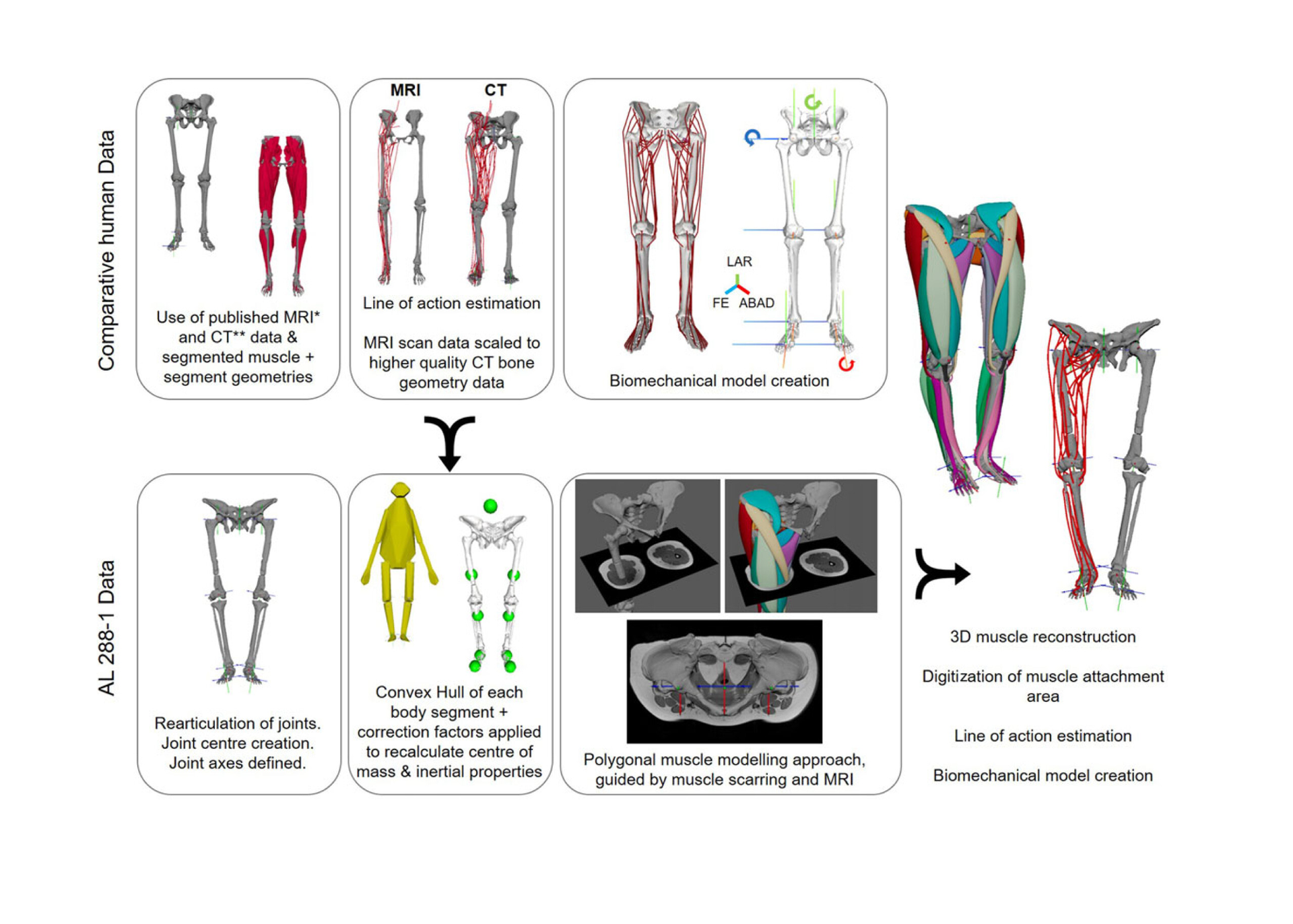https://en.sputniknews.africa/20230618/straight-up-australopithecus-lucy-could-stand-as-erect-as-modern-humans-research-claims-1060008793.html
Straight Up: Australopithecus Lucy Could Stand as Erect as Modern Humans, Research Claims
Straight Up: Australopithecus Lucy Could Stand as Erect as Modern Humans, Research Claims
Sputnik Africa
Australopithecus afarensis was an early human species that lived in East Africa between 2.95 and 3.85 million years ago. It is one of the longest-lived and... 18.06.2023, Sputnik Africa
2023-06-18T16:39+0200
2023-06-18T16:39+0200
2023-06-18T16:39+0200
science
east africa
paleoanthropology
united kingdom (uk)
research
human
https://cdn1.img.sputniknews.africa/img/07e7/06/12/1060009509_0:347:2048:1499_1920x0_80_0_0_19177a0ff716eae50a5eadf43c388668.jpg
Researcher from Cambridge University have discovered that the hominine Australopithecus afarensis was capable of standing straight up like a modern human.For her research, Dr. Ashleigh Wiseman used scans of "Lucy": a famous fossil specimen discovered in Ethiopia in the mid-1970s, based on which she constructed a digital model of the lower body muscle structure of the hominine.The researcher justified her choice of "Lucy" by the fact that it is "one of the most complete specimens of Australopithecus found so far - 40% of her skeleton has been reconstructed."The study recreated 36 muscles in each leg, most of which much larger and bulkier in "Lucy," compared to modern humans.Then the paleoanthropologist determined the axis towards which each joint could move and rotate, based on MRI and CT scans of the muscular and bony structures of modern humans.As a result, Dr. Wiseman revealed that Lucy's knee extensor muscles and the leverage they would provide confirmed her ability to straighten the knee joints as much as a healthy person can straighten them today.Wiseman believes that this reconstruction can perhaps even assist in human evolutionary anatomy teaching.
east africa
united kingdom (uk)
Sputnik Africa
feedback@sputniknews.com
+74956456601
MIA „Rossiya Segodnya“
2023
Maxim Grishenkin
https://cdn1.img.sputniknews.africa/img/07e7/0a/17/1063018107_0:0:1104:1103_100x100_80_0_0_03090c85a11f5d2e8a19cf1d989443c9.jpg
Maxim Grishenkin
https://cdn1.img.sputniknews.africa/img/07e7/0a/17/1063018107_0:0:1104:1103_100x100_80_0_0_03090c85a11f5d2e8a19cf1d989443c9.jpg
News
en_EN
Sputnik Africa
feedback@sputniknews.com
+74956456601
MIA „Rossiya Segodnya“
Sputnik Africa
feedback@sputniknews.com
+74956456601
MIA „Rossiya Segodnya“
Maxim Grishenkin
https://cdn1.img.sputniknews.africa/img/07e7/0a/17/1063018107_0:0:1104:1103_100x100_80_0_0_03090c85a11f5d2e8a19cf1d989443c9.jpg
science, east africa, paleoanthropology, united kingdom (uk), research, human
science, east africa, paleoanthropology, united kingdom (uk), research, human
Straight Up: Australopithecus Lucy Could Stand as Erect as Modern Humans, Research Claims
Australopithecus afarensis was an early human species that lived in East Africa between 2.95 and 3.85 million years ago. It is one of the longest-lived and best-known species of early mankind - paleoanthropologists have discovered the remains of more than 300 individuals.
Researcher from Cambridge University have discovered that the hominine Australopithecus afarensis was capable of standing straight up like a modern human.
For
her research, Dr. Ashleigh Wiseman used scans of "Lucy": a famous fossil specimen discovered in Ethiopia in the mid-1970s, based on which she constructed a digital model of the lower body muscle structure of the hominine.
"To understand how an extinct species may have moved, we first need to reconstruct the missing soft tissues of the skeleton, which rarely preserve, with an understanding of segmental volume and muscular composition within the body," explained Wiseman in her article.
The researcher
justified her choice of "Lucy" by the fact that it is "one of the most complete specimens of Australopithecus found so far - 40% of her skeleton has been reconstructed."
The study recreated 36 muscles in each leg, most of which much larger and bulkier in "Lucy," compared to modern humans.
Then the paleoanthropologist determined the axis towards which each joint could move and rotate, based on MRI and CT scans of the muscular and bony structures of modern humans.
As a result, Dr. Wiseman
revealed that Lucy's knee extensor muscles and the leverage they would provide confirmed her ability to straighten the knee joints as much as a healthy person can straighten them today.
"On the basis of the muscle leverage results, Au.[Australopithecus] afarensis was capable of producing an erect posture but was also capable of using the limb in a repertoire of motions beyond habitual terrestrial bipedalism, in a similar manner to chimpanzees and bonobos," the researcher concluded.
Wiseman believes that this reconstruction can perhaps even assist in human evolutionary anatomy teaching.



